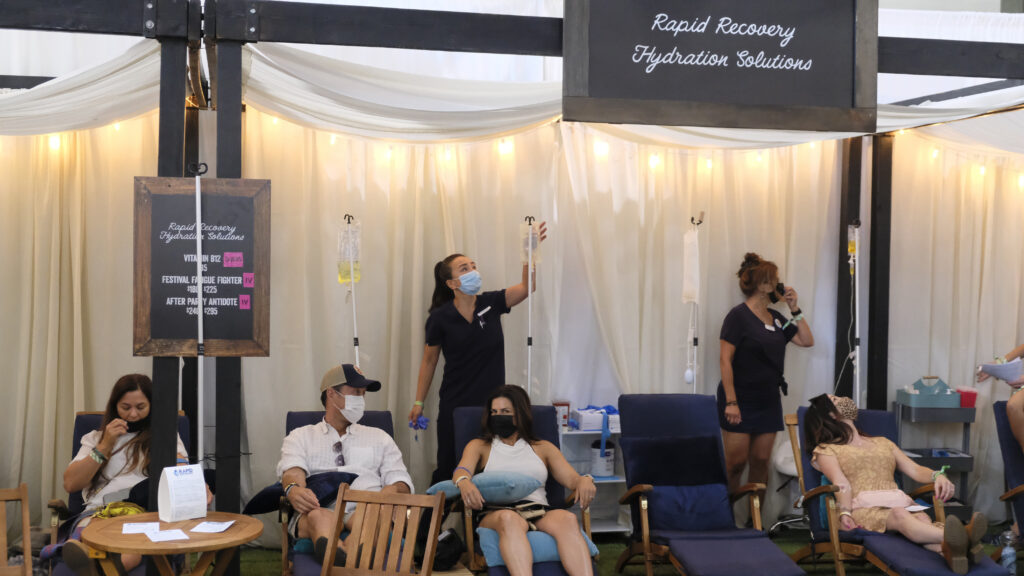Normally, hospitals are, well, flush with IV fluids. But right now, that isn’t the case. In addition to the physical damage to many hospitals and clinics in the region, Hurricane Helene knocked out one of the primary manufacturing plants for IV solutions. The Baxter manufacturing plant in Marion, N.C., which produces about 60% of the IV solutions for the U.S., is not currently operational.
Now, with Hurricane Milton likely to put additional stressors on the health care systems in Florida and other affected states, hospital leaders have called on the Biden administration to declare a national emergency around IV fluids.
advertisement
As a family physician in Nevada, I have already gotten notifications from our local hospitals about an impending shortage of IV fluids. My wife, an anesthesiologist, is working with her group and hospital on strategies to keep the operating rooms functioning while they try to make do with about 40% of their standard shipments. This shortage will affect many of my patients who have scheduled surgeries or need IV fluids for their cancer chemotherapy. I’m planning on having elective neck surgery performed in November or December, and I’m not sure my local hospital will have enough IVs for elective surgeries then.
While some hospitals find themselves considering a number of creative ideas to conserve their stocks for patients who need them most, there’s one easy solution to start conserving IV fluids. Elective IV hydration bars and spas should cease operations until the shortage is over.
While the concept of IV hydration as a “health benefit” dates back to the 1960s, IV hydration bars started taking off about 10-15 years ago. One of the first companies operated out of a bus in Las Vegas, providing IV hydration to hung-over visitors. Since then, IV bars have popped up all over the country, touting many questionable health benefits for patients willing to pay a few hundred dollars. These spas typically include a menu of various vitamins and supplements sold to people under the guise of a “natural way” of being healthier. Some pricey residential buildings even offer it as an amenity.
advertisement
One popular target of these IV spas and mobile treatments is athletes. As the medical director for the Western States Endurance Race and the Tahoe Rim Trail Endurance Race, I have worked to educate our athletes about the harms and lack of benefits of IV fluids for athletes. The American College of Sports Medicine specifically states, “IV fluids do not provide an advantage over drinking oral fluids and electrolytes.” The US Anti-Doping Association and the World Anti-Doping Association prohibit routine IV fluids as they can mask drug testing. During my time working at endurance events, we have made great strides to limit IV fluids to runners who are critically ill and have had appropriate laboratory testing done, which is rarely done in IV spas.
A second market for IV hydration spas is people who are either planning on drinking too much alcohol or had too much to drink the night before. My last time walking through Las Vegas, it seemed like every casino on the strip now has at least one hydration spa on site. Many spas offer group packages for bachelor or bachelorette parties. Binge-drinking alcohol is a significant public health problem in our country. Medical professionals expending their resources to relieve people of a time-limited self-imposed condition could better be used elsewhere. During this IV emergency, it is frankly a waste to help someone feel better from their hangover, while critically ill patients may experience delays in care.
In talking few people who work in these spas, I often hear anecdotal stories about the health benefits of IV hydration for some of their customers. While there may be a few isolated medical conditions where patients benefit from IV hydration, patients with these conditions are best off having the IVs done in outpatient settings with laboratory access. If patients need IVs, they should get them from primary care clinicians or specialists who don’t have a financial incentive to push the fluids.
Similar to our recent shortages of critical medications, we may soon reach a crucial point where our nationwide shortage of IV fluids will impact essential surgeries and life-saving treatments. The number of IV bars may not be huge — just shy of 500, according to one estimate that actually seems very low to me — compared with the number of medical centers that need the fluids. But every drop counts in a moment like this. And every person who gets a recreational infusion is taking it from a patient. The first step in conserving our supply for patients with critical medical conditions would be to redirect the IV fluids used at these spas toward patients who genuinely need them.
advertisement
Dr. Andrew Pasternak is a family medicine physician at Silver Sage Center for Family Medicine in Reno, NV. He is a past president of the Nevada State Medical Association and medical director for the Western States 100.

